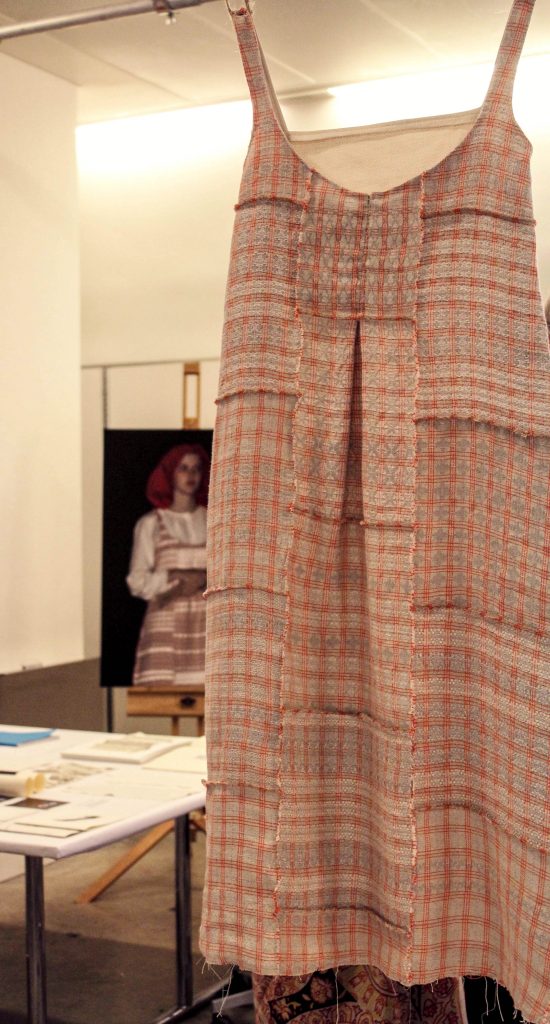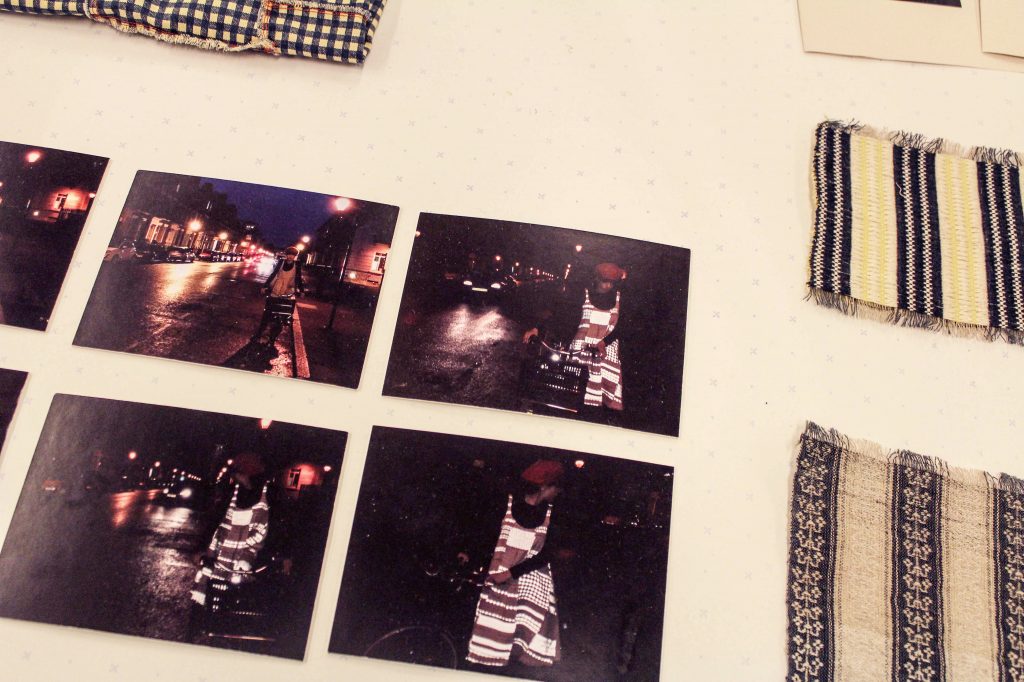Exploring with Linen
Linen is one of the oldest textiles used for dressmaking, given its natural origins from the flax plant grown predominantly in Europe. Now at a time when continued emphasis is placed on preserving our clothing, the textile’s notable sustainable qualities make it a favoured resource for design. To coincide with its Fashioned From Nature exhibition, the V&A partnered up with CELC (the European Confederation for Linen and Hemp)’s I Love Linen campaign and third year textile students at the Chelsea College of Arts for a day showcasing the innovative approaches to linen today.
Being eco-friendly, there are many positives found in the process of turning flax into linen. One is the lack of waste, the flax roots being long so 100% utilised. In the scutching stage, the extracting of fibres is entirely mechanical thus requiring no chemicals and leftovers are preserved- for example, flax dust being used for wall instillations. Linen’s qualities are versatile too: it’s breathable, absorbs and evaporates water quickly, and is thermoregulating so ideal for both summer and winter.
Perhaps one of the most intriguing aspects of designing with linen is the traditional handmade approach that comes with the weaving of the yarns into fabric. Sat outside the room where the I Love Linen event was held were Natasha and Elice, two students weaving with frame looms resting on stretched out legs. Since early last year they’ve taken to the streets of London on multiple occasions to demonstrate the art to the public. While the majority of passers by look down with bemusement or just walk on without acknowledging, there is an element of admirable fun to it while bringing added colour to the city in a subtle and skilful way. Next to each of them were scattered gatherings of coloured threads in linen and silk. On the loom the threads were finely lined vertically, the merging of blues and greens like a strip of sea or Pre-Raphaelite lake, before the addition of contrasting horizontal stripes created the woven texture. When asked what they usually set out to produce, Natasha said that her experimentations often turn into scarves while Elice considers the weaving to be a work of art in itself.
Odette Moncur’s denim was an embracing of customisation while demonstrating what can be done with print. The dungarees, completed for her final collection, consisted of interchangeable pockets fastened with velcro. Linen samples from an earlier project covered a table, designed to replicate the appearance of washed denim (these left-over pieces also became the fabric for the pockets and accompanying bags). Having a visual alternative was a response to the polluting aspect of denim production and the water and dyes that go to waste, which are intensified when developing a washed effect. Odette’s process involved screen printing painted dye onto flat-weave linen in various strokes. The dungarees were constructed from already woven linen denim and, due to 80% of global flax production being done in Europe, made reference to the European Union and Brexit. Having the stars on one of the pockets though meant it wasn’t forced upon the wearer, allowing them to remove the referencing if they wanted.
Linen garments are said to become better with each wash. It becomes more of an incentive to prolong the product’s life
A smock dress was handwoven by Lily Falkingham using the incorporation of retro reflective yarn, taking a feature of sportswear and entwining it with a more fantastical style of dress while also blending the past and future. Inspiration for the textiles came from seeing the designs of London-based label Dashing Tweed, who weave in the hi-vis yarn to create suits suitable for cyclists. A fascination in medieval alchemy and the powers of the moon and sun meant the yarn could be added to transform the appearance of the dress from day to night, in the darkness shining silvery like the moon. It took three long weeks to weave, the result being samples patched together to form a variety of checks and intricate patterning keeping in line with the medieval period.
There are several predominant characteristics to linen. Wet spinning achieves fine yarns for clothing and bedding while dry spinning results in thicker ones ideal for home furnishings, with either of the yarns going on to be woven or knitted. Linen garments are also said to become better with each wash, consequently never ageing. With this in mind, it becomes more of an incentive to prolong the product’s life and keep it as something that can be worn again and again.



